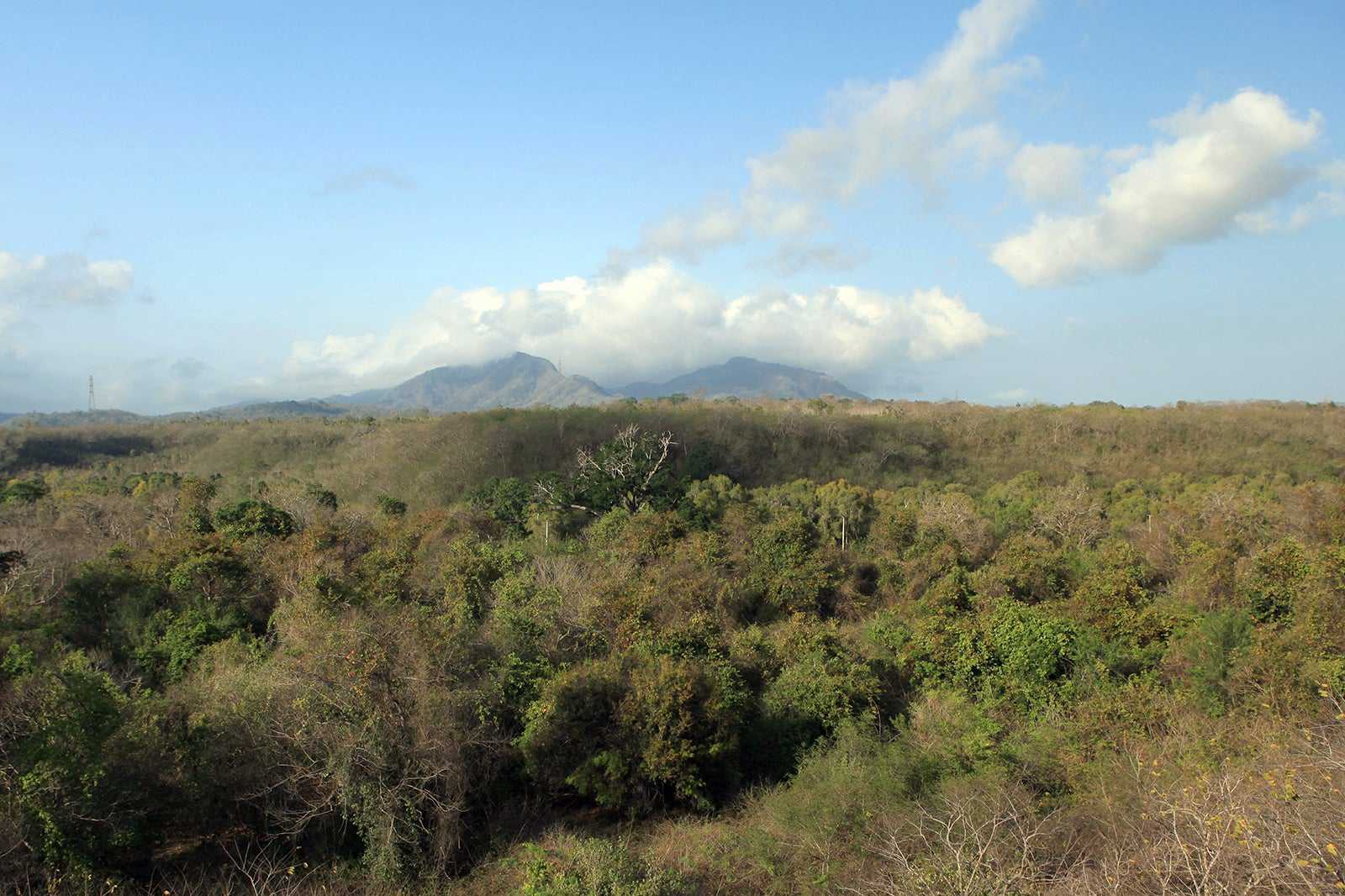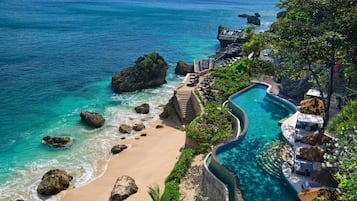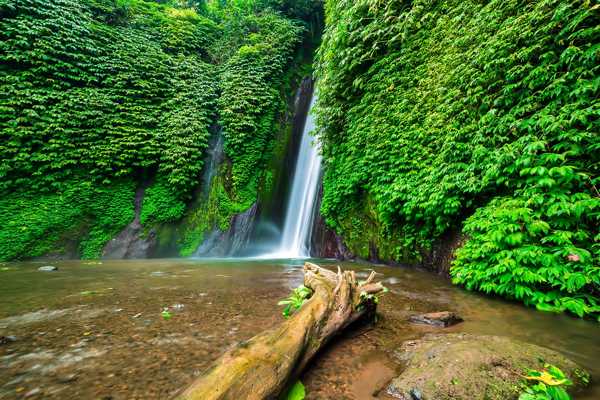West Bali National Park, or Taman Nasional Bali Barat, serves as Bali’s main wildlife and nature conservation area. It makes up most of the central-western Bali region, covering 19,000 hectares of mountainous and coastal zones. Some of the park’s unique ecosystems are the original habitat of the endemic Bali Starling (Leucopsar rothschildi).
The park is also home to over 300 different species of animals and birds and includes open savannahs, dense rainforests, mangrove swamps, coral reefs, and Pulau Menjangan (‘Deer Island’) which is a small island reserve just off the north coast of Bali. The island is home to the Javan rusa deer (Cervus timorensis) and regularly attracts divers to its coral reefs.
West Bali National Park - one of the highlights of 10 Places in Bali to Escape the Crowds and 8 Great Forests and Parks in Bali (Read all about Bali here)

A kép készítője: Ronrad (CC BY-SA 2.0) módosítva
Highlights of West Bali National Park
To enter the park’s protected zones, you’ll need a permit that you can apply for at the park’s information centre on the Jalan Raya Cekik-Gilimanuk main road. You must be accompanied by an official guide most of the times. West Bali National Park hosts scientific research and conservation efforts as well as tourism and recreational activities – all coexist within the region.
The park’s different ecosystems range from mangroves and coastal forests to seasonal forests, lowlands, savannahs and rainforests. There are also several ancient temples within the park as well as 4 peaks: Mount Prapat Agung, Mount Banyuwedang, Mount Klatakan, and the highest, Mount Sangiang. Off the coast, there are 4 islets, namely Menjangan, Burung, Gadung and Kalong.
Besides the endemic starling and rusa deer, other protected fauna in the park include the Sunda pangolin (Manis javanica), the black giant squirrel (Ratufa bicolour), the Malayan porcupine (Hystrix brachyura), the marbled cat (Felis marmorata), the banteng or wild cattle (Bos javanicus), the mouse deer (Trangulus javanicus), the water monitor (Varanus salvator) and the Olive ridley sea turtle (Lepidochelys olivaceae) which often nests around the coastline.

Brief history of West Bali National Park
West Bali National Park’s early beginnings date back to when German naturalist and ornithologist (formerly of the bird department of the Berlin Zoological Museum), Erwin Stresemann, was forced to dock at Singaraja on March 24, 1911, so that his Moluccas expedition ship could undergo a 3-month overhaul. Here, he discovered the Bali starling on one of his researches in the village of Bubunan.
German ornithologist, Viktor von Plessen, then further conducted intensive researches in 1925 based on Stresemann’s notes. It was later discovered that the Bali Starling’s habitat covered only between Bubunan and Gilimanuk and it was later concluded that the species was endemic to this region only.

A kép készítője: Ronrad (CC BY-SA 2.0) módosítva
To protect the rare species as well as the other animals that once included the now-extinct Bali tiger (Panthera tigris balica), a regulation was set in 1947 by declaring the forest lands around Banyuwedang a nature park. In 1970, the park’s management was handed over to the Indonesian government through its forestry department and was reborn as Taman Nasional Bali Barat (West Bali National Park).
The main protection zones are restricted-access areas, meant only for scientific research. The jungle zone has limited ecotourism activities, while the Intensive Utility zone is where you can enjoy most of the recreational highlights and other supporting facilities. Most popular are snorkelling, sightseeing on outriggers, diving, trekking, and birdwatching. You can reach the national park about 3-hour’s drive from Denpasar in southern Bali.

A kép készítője: Sam Hidayat (CC BY-SA 4.0) módosítva
West Bali National Park
Elhelyezkedés: Jalan Denpasar-Gilimanuk, Cekik, Gilimanuk, Melaya, Jembrana, Bali 82252, Indonesia
Telefonszám: +62 (0)365 61060



















